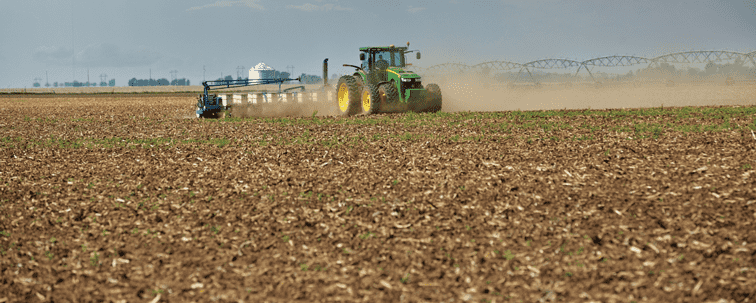Across much of the Corn Belt, farmers remain in a holding pattern as incessant rain and below-normal temperatures keep them from the planter. At what point does the late planting window become more than a nuisance, and when should farmers consider planning corn hybrids that mature earlier? The NK agronomy team is fielding a lot of these types of questions this spring. And while there’s no one-size-fits-all solution, there are several key dates and critical factors that farmers will want to keep in mind.
“A slight delay in planting does not always translate into the need to switch to a shorter relative maturity hybrid to avoid wet corn or frost injury,” advises Todd McRoberts, NK Agronomy Manager. “On average, hybrids will only lose one bushel for every 10 days of planting delay prior to May 10.”
May 10 is an important date for farmers, as planting dates after May 10 are susceptible to a much bigger penalty: they can experience a delayed yield loss of up to 1 bushel per day, according to historical agronomy research and numerous university trials.
“Planting delays often cause farmers to consider switching to early maturity hybrids,” says McRoberts. “Thoughts of an early fall frost can make it an even tougher decision, so it’s important to consider all the factors to make the most profitable choice.”
Five Steps for Achieving an Optimal Corn Planting Depth
The Syngenta Agronomy Research team has conducted multi-year studies to better understand the financial impact of switching to an earlier RM hybrid too soon.
In more than 41 trials, the yield benefits of planting a full-season hybrid outweighed the drying costs at harvest for planting dates up to May 18. After May 23, switching from full- to mid-RM hybrids (4-7 RM earlier than minimum RM for the area) may start to provide slight return advantages — and aggressive changes of 8 days or more RM earlier than the maximum RM for the area may result in drier grain.
However, the lower yield potential of earlier RM hybrids could result in a lower profit than with a full-season hybrid.
So when is it time to change to an earlier maturity? University recommendations for most Midwestern corn-producing states, including Michigan State University, University of Minnesota, Iowa State University and University of Wisconsin, support waiting until May 20-30 to switch to earlier RM hybrids.
“Farmers will also want to take into account their specific operations and environments,” says McRoberts. “For instance, lack of access to grain-drying capabilities, grain contract delivery dates and harvest capacity are just a few other reasons farmers might want to consider switching to earlier maturity hybrids. If these factors are not a concern, then they have an opportunity to maximize profit potential by sticking to their original hybrid selection.”
As of early May, farmers are keeping a close eye on the forecast — but for most, it’s not yet time to change to an earlier maturity hybrid.

All photos are either the property of Syngenta or are used with permission.
© 2022 Syngenta. Important: Always read and follow label and bag tag instructions; only those labeled as tolerant to glufosinate may be sprayed with glufosinate ammonium-based herbicides.
LibertyLink®, Liberty® and the Water Droplet logo are registered trademarks of BASF. HERCULEX® and the HERCULEX Shield are trademarks of Corteva Agriscience LLC.
HERCULEX Insect Protection technology by Corteva Agriscience LLC. Under federal and local laws, only dicamba-containing herbicides registered for use on dicamba-tolerant varieties may be applied. See product labels for details and tank mix partners. Golden Harvest® and NK® soybean varieties are protected under granted or pending U.S. variety patents and other intellectual property rights, regardless of the trait(s) within the seed. The Enlist E3® soybean, LibertyLink®, LibertyLink® GT27®, Roundup Ready 2 Xtend®, Roundup Ready 2 Yield® and XtendFlex® soybean traits may be protected under numerous United States patents. It is unlawful to save soybeans containing these traits for planting or transfer to others for use as a planting seed. Only dicamba formulations that employ VaporGrip® Technology are approved for use with Roundup Ready 2 Xtend® and XtendFlex® soybeans. Only 2,4-D choline formulations with Colex-D® Technology are approved for use with Enlist E3® soybeans. The trademarks or service marks displayed or otherwise used herein are the property of a Syngenta Group Company. ENLIST E3® soybean technology is jointly developed with Corteva Agriscience LLC and M.S. Technologies, L.L.C. The ENLIST trait and ENLIST Weed Control System are technologies owned and developed by Corteva Agriscience LLC. ENLIST® and ENLIST E3® are trademarks of Corteva Agriscience LLC. GT27® is a trademark of M.S. Technologies, L.L.C. and BASF. Roundup Ready 2 Xtend®, Roundup Ready 2 Yield®, XtendFlex® and YieldGard VT Pro® are registered trademarks used under license from the Bayer Group.